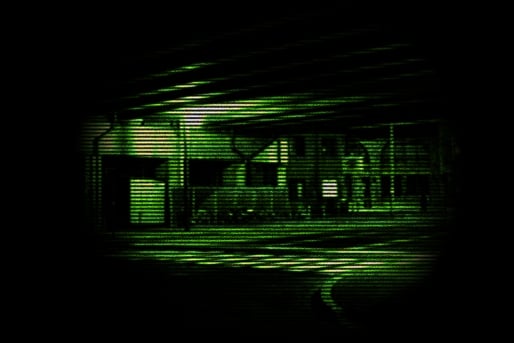Our next screen effect is definitely a more popular one. The night vision screen effect is seen in Call of Duty Modern Warfare, Halo, and just about any first-person shooter out in the market today. It is the effect of brightening the whole image using that very distinct lime green color.
In order to achieve our night vision effect, we need to break down our effect using Photoshop. It is a simple process of finding some reference images online and composing a layered image to see what kind of blending modes you will need or in which order we will need to combine our layers. The following image shows the result of performing just this process in Photoshop:

Let's begin to break down our rough Photoshop composite image into its component parts so that we can better understand the assets we will have to gather. In the next recipe, we will cover the process of doing this.



